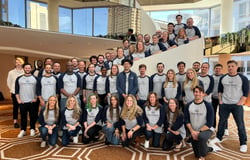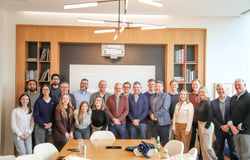review of any existing information of state-/region-/sector-level vision, policy and/or strategy papers, master plans, sector plans, etc., support to strengthen the urban infrastructure vision/plans and preparation of urban strategy and city investment plans along with prioritization framework and subproject selection criteria, identification/review and prioritization of subprojects based on pre-feasibility studies and above vision/plans/framework/criteria, prior to–undertaking feasibility studies/conceptual design, etc. (as appropriate),and preparation of comprehensive DPRs and bid documents; and at the study stage, the subproject components should cover wastewater/sanitation networks, septage management systems, wastewater/ septage treatment requirements; and recommend any changes/modifications for improvement, if required, while keeping in mind the feasibility of any possibilities/potential use for innovative and climate resilient interventions compatible with natural ecosystems/ bio-diversity, such as bio-digesters that perform based on principles of bio-remediation and/or phyto-remediation (with or without energy recovery), constructed wetlands, etc.; support in supervising topographic surveys, review the results of the topographical surveys, geotechnical surveys/ investigations, hydrological and geological studies (as felt required), and integrate these considerations in the design. Based on preliminary surveys, investigations and validated data contribute to the planning and design activities related to wastewater/sanitation networks, wastewater/ septage treatment requirements, such as wastewater/ sewage treatment plant (WWTP/ STP) and/or septage treatment plants (SeTP), oxidation ditch, etc., septage management interventions (including vehicles/ equipment, etc.), including any site integrated bio-digester systems with reed plant, constructed wetlands, etc.; support to strengthen any existing plans for subprojects, and finalize the subproject components (e.g., wastewater collection points, wastewater storage, transmission, treatment and connections to the treatment and disposal networks; WWTP/ STP with components of bar screens, grit chamber, comminutors, pre-aeration tank, primary settling tank, aeration tank, secondary settling tank, biological filters, sludge handler, oxidation ditch, disinfection process; septage management interventions (including vehicles/ equipment, SeTP, etc.), any site integrated bio-digester systems with reed plant, constructed wetlands, etc.); while finalizing the detailed engineering designs, specifications and drawings, keep in consideration factors for resilience to climate risks/ climate change impacts and disaster risks(as per national standards/international standards and/or best practices, including ADB‟s South Asia Department framework and practice, etc.), rapid climate risk assessment/ detailed climate risk and adaptation assessment or CRA (formerly climate risk and vulnerability assessment or CRVA) and climate resilience framework and measures prepared for adoption in detailed engineering designs, etc., at subproject/project-level, with due consideration to concepts/best practices of IWRM, IUWM, WSUD, faecal sludge and septage management systems supported by scheduled desludging/emptying mechanism managed through performance linked annuity model of private sector participation, etc.; and potential use of innovative and climate resilient advanced wastewater treatment systems (principles of faecal sludge and septage management with co-treatment/reuse of treated wastewater/integrated-with or without energy recovery), as feasible;
At Surbana Jurong, we put talent, hard work, teamwork and a fun workplace together to approach problems and solve them creatively and collaboratively. Join us in making a positive impact on the world!
Top Skills

What We Do
SMEC is a global engineering, management and development consultancy with a 70-year history of delivering advanced solutions on a global scale across urban development, infrastructure and management services industries.
We are specialists in providing design leadership, consulting and advisory expertise across the roads and highways, rail and metro, aviation, hydropower and renewable energy sectors.
SMEC has a long and proud history which dates back to Australia’s iconic Snowy Mountains Hydroelectric Scheme in 1949, one of the largest and most complex hydroelectric schemes in the world.
Joining the Surbana Jurong Group in 2016, SMEC is part of a family of specialists. We are committed to delivering sustainable solutions that help to connect, move and power people and communities.
For the latest news, visit our newsroom www.smec.com/newsroom or read about the innovations and solutions shaping our communities on our Infocus blog www.smec.com/infocus.
At SMEC, our global workforce is made up of experts who bring unique talent, experience and passion to their fields. We offer a rewarding career path for enthusiastic and collaborative achievers who are motivated to make a difference. For more information or to view current vacancies visit www.smec.com/careers.






